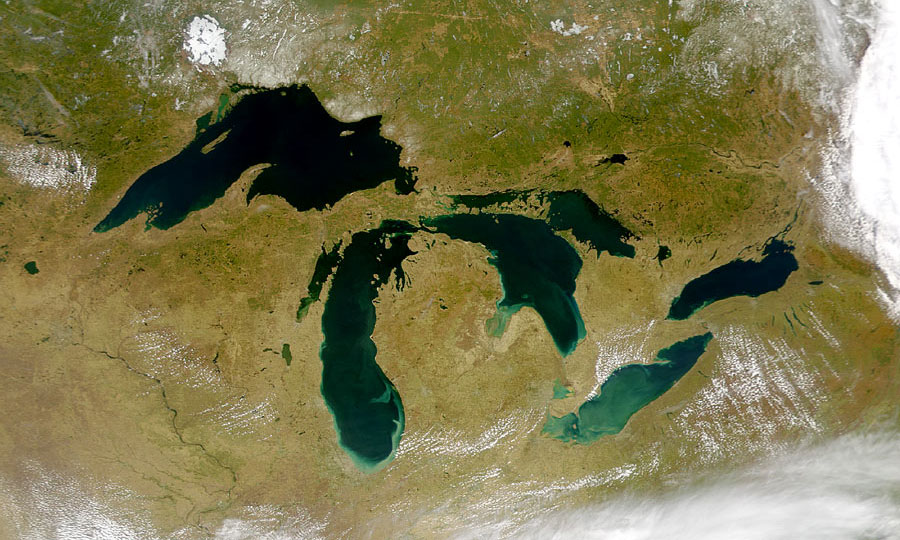 The Clear Choice for Environmental Sustainability: Pollution Prevention Results from 2010 to 2012 presents available information on the achievements of state and local P2 programs for the calendar years 2010 to 2012. The Report was produced by the National Pollution Prevention Roundtable (NPPR) based upon the results shared by 90 pollution prevention (P2) programs in the United States.
The Clear Choice for Environmental Sustainability: Pollution Prevention Results from 2010 to 2012 presents available information on the achievements of state and local P2 programs for the calendar years 2010 to 2012. The Report was produced by the National Pollution Prevention Roundtable (NPPR) based upon the results shared by 90 pollution prevention (P2) programs in the United States.
The Report shows that P2 projects yielded about $5.4 billion in economic benefits during the three year period. During this three-year period, waste was reduced by 8.9 billion pounds, which is the amount of waste produced by 5.5 million people annually. 8.8 billion gallons of water and 1.4 billion kWh of electricity were also conserved. This study affirms that pollution prevention results in conservation of valuable resources and significant waste reductions.
Other achievements between 2010 and 2012 include 1.7 billion pounds of greenhouse gases (GHG) no longer being released into the earth’s atmosphere. There were also 30,000 attendees at P2-themed training events, more than 10,000 site visits conducted, and more than 240 environmental management systems development.
The Report is a product of the P2 Results Task Force, whose membership includes representatives from State P2 programs, EPA Headquarters and Regions, Pollution Prevention Resource Exchange Centers (P2Rx), as well as NPPR. The Task Force has developed a National Pollution Prevention Results Data System, (the System). The System aggregates data that is collected, managed, and synthesized by state and local P2 programs, non-profits, companies, and other organizations. It is a collaborative and ambitious effort to grow and maintain a national database of P2 results, with reduction efforts including behavior changes by industry; reductions in waste, energy consumption, and water usage; and economic gains achieved through these activities. P2 results data collection, reporting and analysis help P2 programs to ensure that they understand their impacts and can chart an effective course for the future.
Proven Results from Pollution Prevention
General Motors’ Toledo transmission manufacturing facility has committed to making pollution prevention and recycling a facility-wide priority. The plant’s effective energy conservation program was implemented as part of its “drive to zero” program. The program was recognized by the U.S. EPA for lowering greenhouse gas emissions by more than 30 percent and subsequently avoiding nearly 40,000 metric tons of carbon dioxide emissions. GM Toledo hosts the largest rooftop solar array in the state of Ohio and uses landfill gas, which combined provide 19% of the facility’s energy use from renewable energy sources. GM Toledo is also a landfill free facility, sending no waste from daily operations to landfill – all waste is reused, recycled or converted to energy. “Our reductions in carbon emissions from improved energy efficiency and renewable energy initiatives at the Toledo facility are made possible through the ongoing collaborative work with local utilities, state and local environmental service organizations and other private businesses,” said Laura Bartling, GM’s Midwest environmental group manager. “They’ve demonstrated what can be achieved through a holistic and community-engaging approach at reducing our environmental footprint.”
Jeffrey Burke, Executive Director for NPPR said, “We have been measuring environmental outcomes since 1990 when the Pollution Prevention Act was signed by Congress. The collective reduction of pollutants reduced into the air, water and land in the last 25 years is just astounding. We believe that focusing on preventing pollution at its source rather than clean-up was the right choice from the start.”
To view the Report, go to http://www.p2.org/news/ .
About
The National Pollution Prevention Roundtable, a 501(c)(3) non-profit organization, is the largest membership organization in the United States devoted solely to pollution prevention (P2). The mission of the Roundtable is to provide a national forum for promoting the development, implementation, and evaluation of efforts to avoid, eliminate, or reduce pollution at the source.
P2Rx is a national partnership of regional pollution prevention information centers funded in part through grants from EPA. They build networks, deliver P2 information, and measure P2 program results. The strength of the network lies in the expertise and diversity among the regional centers and the variety of audiences served including government and state environmental agencies, technical assistance providers, businesses, educators, nonprofit organizations, and the general public. For more information, visit: www.p2rx.org.
